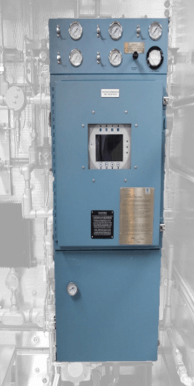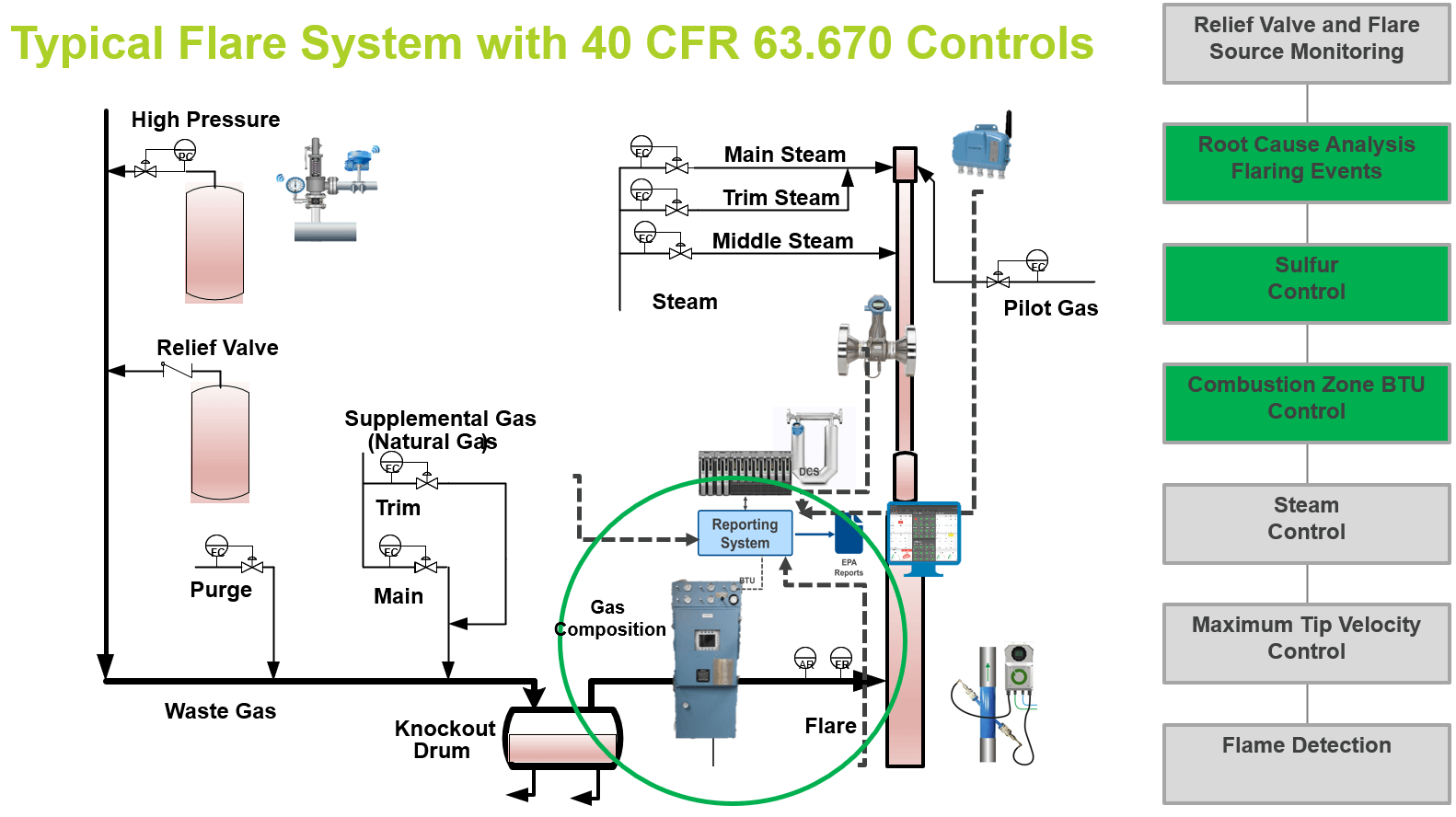Emerson’s Jamie Marsden presented on the subject of gas chromatographs (GCs) for flare regulations 40 CFR Part 63 at the 4C Heath, Safety & Environmental conference. Here is his presentation abstract:
Gas Chromatograph Fast BTU Flare measurement and control – Application spotlight to discuss EPA ruling 40-CFR-63 BTU measurement in Flares, and CEMS VOC Measurement. – Discussion on VOC measurement for Vinyl Chloride (VCM) in ambient air.
Jamie opened describing the U.S. 40 CFR 63 regulations which set flare operating limits, require a flare management plan (FMP), and require a continuous parameter monitoring system (CPMS) plant. They also cover pilot flame monitoring, visible emissions and flare tip velocity.
 The regulation states that within a 15-minute time block, the owner/operator must measure the net heating value of flare combustion zone gas (NHVcz) to make sure it’s above 270 BTUs per standard cubic foot (BTU/SCF).
The regulation states that within a 15-minute time block, the owner/operator must measure the net heating value of flare combustion zone gas (NHVcz) to make sure it’s above 270 BTUs per standard cubic foot (BTU/SCF).
Technologies that measure net heating value include calorimeter, mass spectroscopy, and gas chromatographs. Calorimeters do BTU measurements only. Mass specs do BTU and composition but require a shelter. GCs do BTU, gas composition, work on multiple streams, but don’t necessarily require a shelter in warmer regions.
He described Emerson’s Rosemount 1500XA gas chromatograph with Intercolumn (ITC) detectors, 2 clocks, 4 detectors and a redesigned detector housing. Parallel chromatography allows for breaking down a complex train into the simpler trains that can be run simultaneously. The ITC can be used to show components as they elute from one column to another.
GC technology requires the hydrocarbon to be unpacked into its components which takes time to complete. Sample conditioning is important to make sure the gas being analyzed gets a good, clean sample.
Fast GC measurements combine some larger components such as carbon chains 3 atoms and longer into a single measurement (C3+). Longer may consider something like C5+.
Visit the Gas Chromatographs section on Emerson.com for more on the technologies and solutions to meet stringent flare regulatory reporting.


